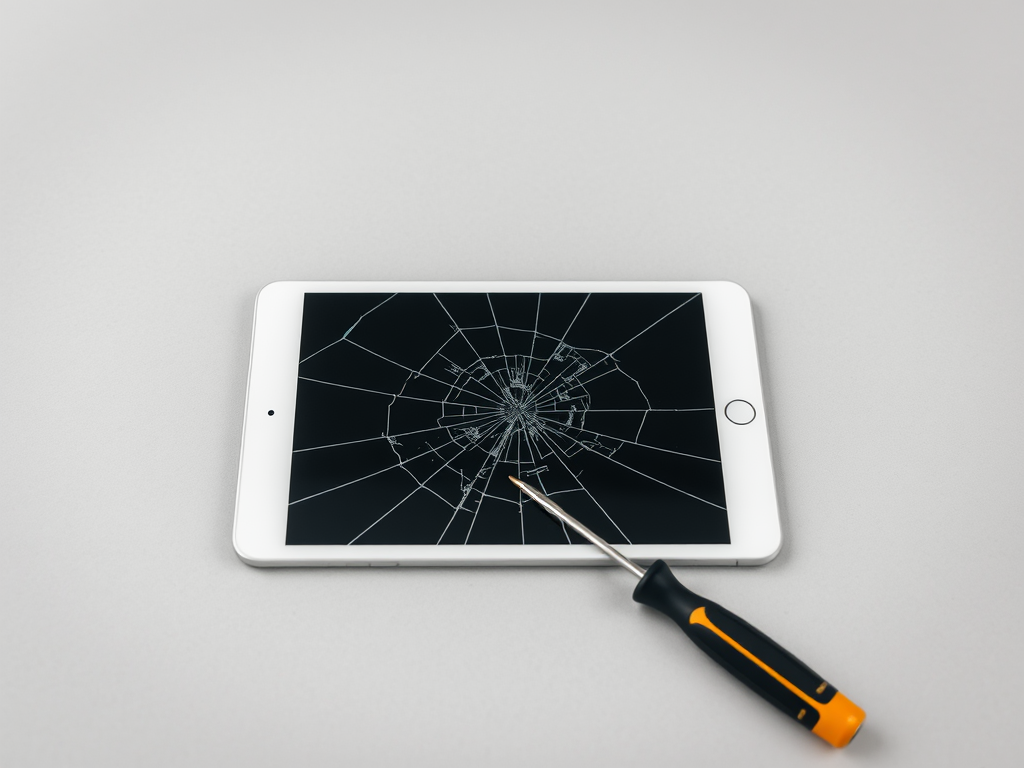Cracked tablet screens are a common dilemma faced by many device owners. Whether it’s due to an accidental drop or immense pressure, a cracked screen can significantly hamper your device’s usability. As more people seek cost-effective solutions, the notion of DIY repairs has gained traction. But is attempting to fix that cracked screen yourself really a good idea? In this article, we’ll explore the viability of DIY methods, making sure you have all the information you need to make an informed decision.
From understanding the nature of the damage to assessing repair methods, we aim to provide a comprehensive guide. By the end of this article, you’ll not only weigh the pros and cons of DIY repairs but also gauge when it’s time to reach out to a professional. The right approach could save you time, money, and perhaps even your beloved tablet.
Understanding Cracked Tablet Screens

It’s essential to grasp the reasons behind why tablet screens suffer damage. The most prevalent cause is the simple act of dropping the device, which often leads to cracks that can range in severity. Pressure from objects in bags or even a child stepping on it could also lead to unfortunate damage. Additionally, the type of crack—be it superficial or extensive—can heavily impact how the device functions and whether you can successfully complete a repair.
Moreover, scenarios like environmental changes, such as extreme heat or cold, can stress the screen, making it prone to cracking. It’s also vital to recognize that sometimes these screens may fail simply due to wear and tear over time. The distinction between different kinds of cracks and their impacts could be the key to deciding on a DIY approach or professionally assisted repair. Understanding these factors empowers you to make the right choice for your situation.
Assessing the Damage

Before diving into repairs, it’s crucial to accurately assess the extent of the damage to your device. The first step is to identify the type of crack present on the screen. Are there minor hairline fractures, or has the glass shattered into an unusable state? Checking for inconsistencies in touch sensitivity or display distortion will give you a better understanding of how detrimental the damage is. Additionally, consider whether the cracks are primarily cosmetic or if they interfere with the tablet’s functionality.
Factors to consider when assessing the damage include:
- Type of crack: shallow, deep, or shattered.
- Location of the damage on the screen.
- Impact on touchscreen functionality.
If your tablet’s performance is severely affected, it may not be worth the risk of a DIY repair. On the other hand, if the damage is superficial and doesn’t hinder performance, a DIY fix could restore your screen effectively and save you costs.
DIY Repair Methods
If you’ve decided on a DIY approach, you have several options to choose from. Below are popular methods that many tablet users have utilized for screen repair. These methods can range from formal repair kits to using common household items.
| Repair Method | Materials Required | Effectiveness |
|---|---|---|
| Repair Kits | Screwdrivers, adhesive, replacement screen | High |
| Household Items | Clear tape, super glue, etc. | Variable |
| Online Guides | Internet access, tools as needed | Medium to High |
Using Repair Kits
Repair kits have become increasingly popular due to their comprehensive contents. Typically, they come with a new screen, adhesive, and specialized tools required for the repair. That said, while these kits offer a straightforward method for repairing your tablet, they also come with some drawbacks. The process can be quite intricate, and if you aren’t comfortable with disassembling your device, you could run into trouble.
Using Household Items
In times of need, you may find yourself resorting to household items for a quick fix. While this is often viewed as a temporary solution, it could help you in a pinch. For instance, clear tape can be used to hold a shattered screen together, though not advised as a long-term fix. Here are some other household items that might help:
- Super glue for minor cracks
- Screen protector to help mitigate further damage
- Clear adhesive tape
Nevertheless, it’s crucial to approach such solutions with caution. Improper use of these items might worsen the damage and make the repair process more complicated down the line.
Online Tutorials and Guides
Research is a critical aspect of the DIY repair process. Many resourceful individuals have shared their experiences online through video tutorials and written guides. YouTube hosts countless channels dedicated to tech repairs, where you can visually follow along with the process. Websites dedicated to device repairs can also provide you with valuable step-by-step instructions that help demystify the endeavor.
Your preparation should not only involve gathering materials but also familiarizing yourself with the steps required for the repair. Instructional content can help you visualize each process, reducing the chances of errors during the actual repair.
Weighing the Pros and Cons
Every decision has its positives and negatives. When it comes to DIY repairs, the allure typically lies in cost savings and self-satisfaction. You have the potential to save money on service fees, and the achievement of completing a repair on your own can be exhilarating. However, it’s essential to weigh these benefits against the likelihood of making a mistake that could further damage your device.
It’s also common knowledge that DIY repairs often lack the professional polish that a trained technician can provide. Moreover, there could be warranty implications if your device is still under manufacturer’s support. Here are some pros and cons to consider:
- Pros:
- Cost-effective compared to paying for repair services.
- Gain hands-on experience with technology.
- Sense of accomplishment upon successful completion.
- Cons:
- Risk of causing further damage to the device.
- Potential voiding of warranty.
- Lack of professional quality results.
When to Seek Professional Help
If your assessment reveals that the damage is more than superficial, it may be wise to consult a professional. Indicators such as extensive screen cracks, persistent issues with visibility, or touchscreen functionality can justify seeking expert help. Remember that doing nothing at all could lead to further problems down the line, leading to more significant costs later.
Consider weighing these factors:
- Severe physical damage that requires specialized tools.
- Cost of professional repairs versus continual DIY attempts.
- Time constraints that make a professional repair more viable.
Conclusion
To wrap up, the decision to engage in a DIY repair for your cracked tablet screen comes down to weighing various pros and cons. While there’s the satisfaction of completing the repair yourself and possibly saving money, the risks involved shouldn’t be underestimated. Assessing the damage carefully and understanding your own comfort level with technology will guide your decision-making process.
Ultimately, whether you choose to roll up your sleeves or seek professional assistance, the key is to make an informed choice based on your unique circumstances. Taking the time to explore your options might lead you to an effective solution, regardless of which path you choose.
Frequently Asked Questions
- Can I repair a cracked screen myself? Yes, with the right tools and methods, you can attempt a DIY repair.
- What materials do I need for a DIY repair? A repair kit typically includes tools like screwdrivers, adhesive, and possibly a replacement screen.
- Are DIY repairs safe for my device? They can be safe if done carefully, but improper techniques may worsen the damage.
- How much can I save by repairing it myself? DIY repairs can save you a significant amount compared to professional repair costs.
- What if my screen is only partially cracked? A partial crack may be repairable, but it’s advisable to monitor it to prevent further issues.
